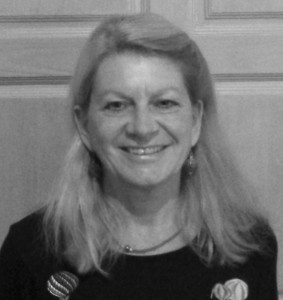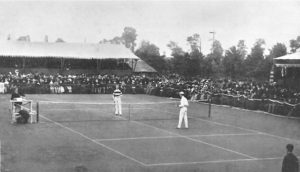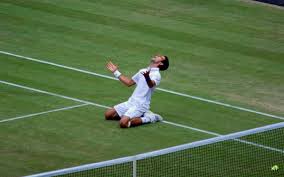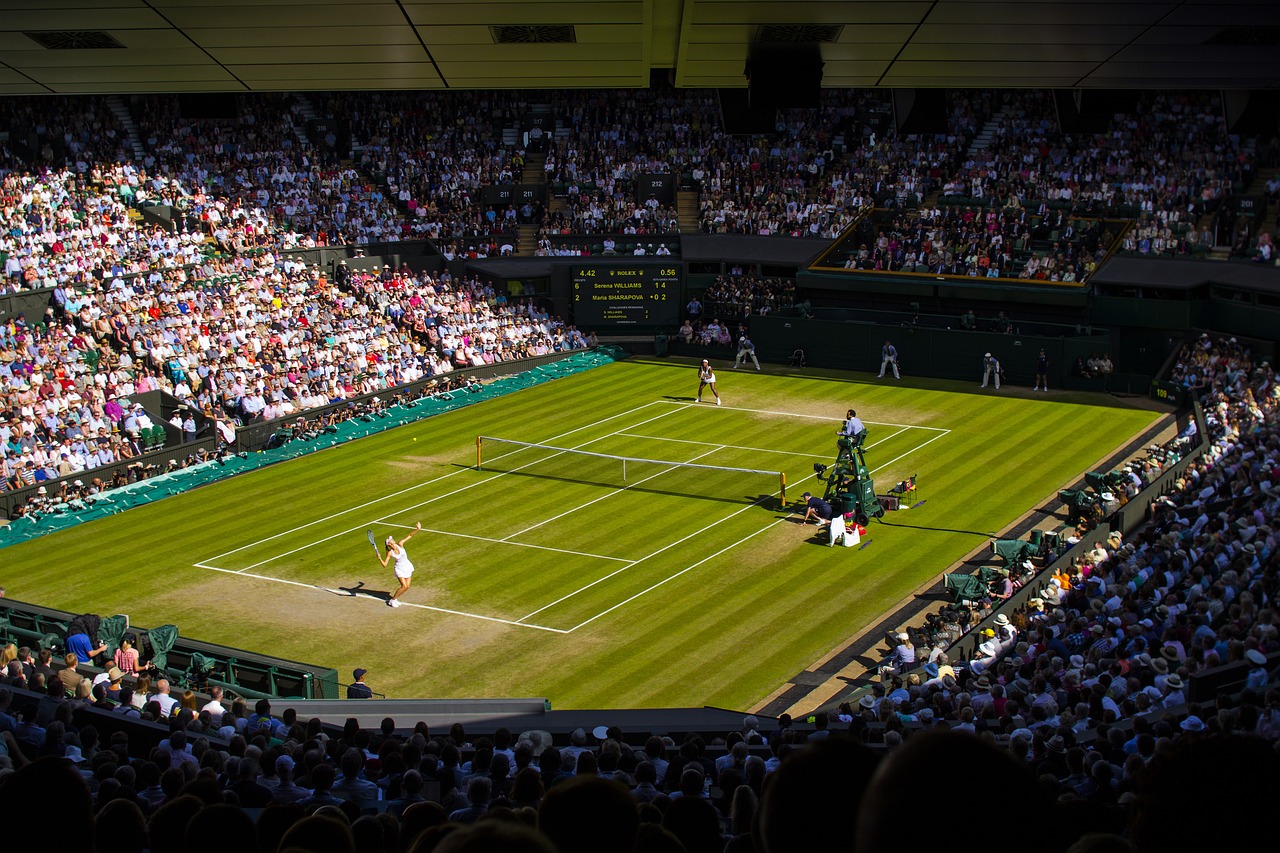18 July 2019
Equal Pay for Equal Play?
Is the current system fair?
By Lynda Goetz
 Thursday afternoon last week was Ladies’ semi-finals day on Centre court at Wimbledon. There were two matches. The first between Serena Williams and Barbora Styrcova was over fairly quickly as Serena beat her unseeded opponent 6-1, 6-2, in the best-of-three sets match. The second match between Simona Halep and Elina Svitolina lasted a little longer before Halep emerged victorious, likewise after two sets, 6-1, 6-3. On Friday afternoon it was the turn of the men. At Wimbledon, as well as the Australian, US and French Open, they have to play the best-of-five sets. Both semi-finals went to four sets before Roger Federer triumphed over his old rival Rafael Nadal and Novak Djokovic beat Roberto Bautista Agut.
Thursday afternoon last week was Ladies’ semi-finals day on Centre court at Wimbledon. There were two matches. The first between Serena Williams and Barbora Styrcova was over fairly quickly as Serena beat her unseeded opponent 6-1, 6-2, in the best-of-three sets match. The second match between Simona Halep and Elina Svitolina lasted a little longer before Halep emerged victorious, likewise after two sets, 6-1, 6-3. On Friday afternoon it was the turn of the men. At Wimbledon, as well as the Australian, US and French Open, they have to play the best-of-five sets. Both semi-finals went to four sets before Roger Federer triumphed over his old rival Rafael Nadal and Novak Djokovic beat Roberto Bautista Agut.
I have long been a keen tennis fan and player and was treated to my first Wimbledon visit in 1964, when I went with my father. In those far-off days most of those who went to watch were also players themselves and were knowledgeable about the game. Audiences were respectful and quiet. Although the event had been running since 1877 for men and 1884 for women, it did not have massive universal appeal. The players were all amateurs and that year’s Ladies Singles champion, the Brazilian, Maria Bueno, was given a clothes voucher for her efforts (although she was then flown home in a presidential jet and given a ticker tape welcome in Sao Paulo, as she was the first non-North American woman to win both Wimbledon and the US championships in the same year). However, it was not until four years later in 1968 that the event became ‘open’ and welcomed professional as well as amateur players. From then on, things changed; slowly at first but then increasingly fast.
 Now, over 50 years later, and 135 years since the amateur tournament began, things could not be more different. In 1968 the winner of the Men’s Singles, the Australian Roy Emerson, won £2,000; the winner of the Ladies’ Singles, American, Billie-Jean King £750. This year, both finals’ winners, Simona Halep and Novak Djokovic won £2.35 million; even accounting for inflation that is a wholly different league. It reflects in part the massive increase in popularity of the game. It also reflects the investment which has gone into developing tennis as a sport. But should women really receive the same payment for a best-of-three set match or series of matches as the men do for best-of-five matches? Now, don’t get me wrong; I believe in equality – both of opportunity and remuneration – but does it not seem a tad unfair that to achieve this sort of fabulous sum the men have to go through a gruelling five-setter (or possibly a series of them) whilst the women can receive exactly the same amount for what is effectively less work?
Now, over 50 years later, and 135 years since the amateur tournament began, things could not be more different. In 1968 the winner of the Men’s Singles, the Australian Roy Emerson, won £2,000; the winner of the Ladies’ Singles, American, Billie-Jean King £750. This year, both finals’ winners, Simona Halep and Novak Djokovic won £2.35 million; even accounting for inflation that is a wholly different league. It reflects in part the massive increase in popularity of the game. It also reflects the investment which has gone into developing tennis as a sport. But should women really receive the same payment for a best-of-three set match or series of matches as the men do for best-of-five matches? Now, don’t get me wrong; I believe in equality – both of opportunity and remuneration – but does it not seem a tad unfair that to achieve this sort of fabulous sum the men have to go through a gruelling five-setter (or possibly a series of them) whilst the women can receive exactly the same amount for what is effectively less work?
The Federer-Nadal semi-final was, for many keen tennis fans, a ‘must watch’ event. Eleven years on from that epic five-set final between them in 2008, won by Nadal, it was always going to be a keenly-awaited contest. The match did not disappoint and although it went ‘only’ to four sets, it was a struggle between giants and an impressive display of technical prowess, physical fitness and endurance and mental stamina. Djokovic likewise had to go the distance against another Spaniard, Bautista Agut. The following day, Serena Williams, seven-times champion, faced Simona Halep in the Ladies’ Final. Both had played relatively short, ‘easy’ semi-final matches. Serena was beaten quite convincingly 6-2, 6-2 in a match which lasted just under an hour. Sunday afternoon was the Men’s Final. That lasted a few minutes short of five hours.
 I am not saying that the Women’s Final was not interesting. It was actually an impressive display of tennis. Halep was the first Romanian to win Wimbledon and although I wasn’t there in person it really felt as if the crowd was both on her side, as the perceived underdog, and at the same time willing hard-hitting champion Serena to pull something out of the hat, as it became increasingly evident that the match was being dominated by her opponent. However, there was no question but that the following day’s Men’s Final gave far more ‘bang for your bucks’. This was a thrilling, engrossing, full afternoon’s entertainment. The final score was 7-6, 1-6, 7-6, 4-6, 13-12. The tension was palpable throughout, as the No 1 and No 2 seeds fought it out in SW19. The match was the longest-ever final and at four hours and 57 minutes exceeded the 2008 Federer-Nadal final by 11 minutes. Both players were brilliant and it was hard not to feel slightly sorry at times for the eventual champion who throughout the match had to contend with a more-than-slightly partisan crowd who were rooting for Wimbledon favourite, Roger Federer. As some reporters said, there were times when the crowd behaved more like football supporters than tennis supporters. The nature of the game has changed totally and it is no longer perceived as a slightly effete middle-class sport. There are too many stories of those from impoverished backgrounds having made it to the top by sheer force of will and determination to view it in that way. Although it will never be quite like soccer, players from around the world have their supporters who can be far more vocal than they used to be.
I am not saying that the Women’s Final was not interesting. It was actually an impressive display of tennis. Halep was the first Romanian to win Wimbledon and although I wasn’t there in person it really felt as if the crowd was both on her side, as the perceived underdog, and at the same time willing hard-hitting champion Serena to pull something out of the hat, as it became increasingly evident that the match was being dominated by her opponent. However, there was no question but that the following day’s Men’s Final gave far more ‘bang for your bucks’. This was a thrilling, engrossing, full afternoon’s entertainment. The final score was 7-6, 1-6, 7-6, 4-6, 13-12. The tension was palpable throughout, as the No 1 and No 2 seeds fought it out in SW19. The match was the longest-ever final and at four hours and 57 minutes exceeded the 2008 Federer-Nadal final by 11 minutes. Both players were brilliant and it was hard not to feel slightly sorry at times for the eventual champion who throughout the match had to contend with a more-than-slightly partisan crowd who were rooting for Wimbledon favourite, Roger Federer. As some reporters said, there were times when the crowd behaved more like football supporters than tennis supporters. The nature of the game has changed totally and it is no longer perceived as a slightly effete middle-class sport. There are too many stories of those from impoverished backgrounds having made it to the top by sheer force of will and determination to view it in that way. Although it will never be quite like soccer, players from around the world have their supporters who can be far more vocal than they used to be.
But noise levels aside, should ‘gentlemen’ providing us with entertainment at this level and for this amount of time be being paid the same as those ‘ladies’ who battled it out for a mere hour at a time? Billie-Jean King, mentioned earlier, was notoriously one of the key players in the drive for equality between men and women in the game. In 1974 she famously took up the challenge of Bobby Riggs, a former number one tennis player, to play a match against him. He had already beaten champion Margaret Court and Billy-Jean was reluctant to take him on, fearing that a loss by her could set back women’s tennis by years. When she eventually did so in a match dubbed ‘The Battle of the Sexes’ and later the subject of a film, she managed to beat him 6-4, 6-3, 6-3. It is worth bearing in mind though the fact that she was 31 to his 55. Are women able to go the distance? Should they have to do so?
Former champion, Martina Navratilova, has, as recently as a week ago, suggested that women as well as men should play the best of five sets in the later stages of the Grand Slam tournaments. She proposed that, “Maybe the way to go would be: everybody plays two out of three [sets] until the quarters, then everyone — women and men — play three out of five in the quarters, semi-finals, finals.” Andy Murray made the same point back in 2013 and it seems extremely odd that this subject has not been raised again in the light of last weekend’s finals and the earlier semis. As Murray and Bobby Rigg, amongst others, have pointed out, playing the best-of-three or the best-of-five make for ‘a different sport’. One is ‘a longer distance’. If women want equal pay, surely they should have to give equal play? Now that would be equality.


